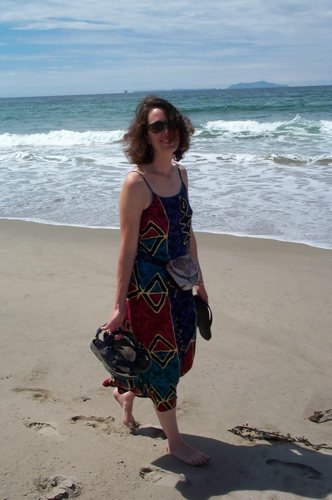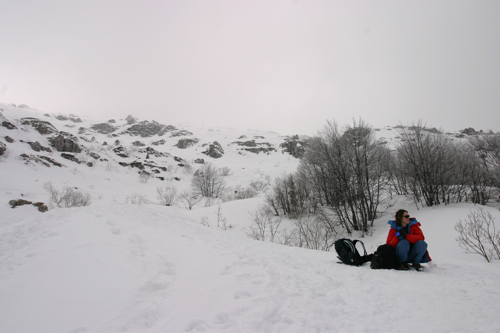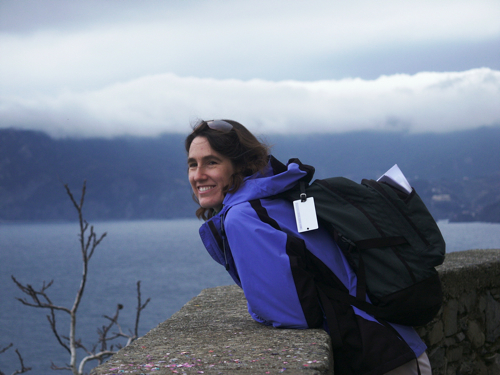Anna T. — who explores art, meditation and life on her See. Be. Draw. blog — wrote about the importance of nature the other day.
In her post, she referred to research on two different types of attention: directed attention and soft fascination. Directed attention is seen as a limited resource that tends to get overused and depleted in our modern, urban society. Soft fascination, particularly in nature, replenishes our attentional capacity. I was intrigued by Anna’s observations and saw a parallel between these attention types and various meditation methods.
Her post also triggered my nature envy. Living in Milan, Italy for the past eight years has been enormously difficult for me. I’m from California, land of open spaces and smiling faces. I spent a decade living in the foothills of the Himalayas, viewing snow mountains from my window and treading nature’s paths on my way to work and to the market. As a highly social person, I like the energy of cities. But I need beauty — soft natural beauty — to recharge my batteries, to nourish my spirit, to keep the smile on my face. (Sprinkled throughout this post are photos of me in environments that make me happy.)

The research I’ve uncovered in a brief survey of the internet, spurred by Anna’s post, supports my intuitive sense that it’s easier to be happy when in contact with nature.
An article entitled Green is Good for You appeared in the Monitor on Psychology journal of the American Psychological Association (Volume 32, No. 4 April 2001). In it, Rebecca A. Clay discusses psychologist Rachel Kaplan’s work and experience. After years of research in environmental psychology, Kaplan was only mildly surprised by the strong positive effect that moving to an office with a scenic view had on her mood and attitudes toward work. She and her husband had long been exploring nature’s impact on people’s mental, social, and physical functioning.
The same article cites a study by Terry A. Hartig, PhD, MPH, who explored nature’s ability to help people recover from “normal psychological wear and tear.”
Hartig asked participants in one study to complete a 40-minute sequence of classification tasks designed to exhaust their directed attention capacity. After these fatiguing tasks, randomly assigned participants spent 40 minutes walking in a local nature preserve, in an urban area, or sitting quietly reading magazines and listening to music. At the end of 40 minutes, those who had walked in the nature preserve performed better than the other participants on a standard proofreading task. They also reported more positive emotions and less anger.

The abstract of an article by Herzog, Black, Fountaine, and Knotts published in the Journal of Environmental Psychology in 1997 and entitled “Reflection and attentional recovery as distinctive benefits of restorative environments” reads:
“Attention Restoration Theory (ART) proposes that effortful directed attention can become fatigued in modern urban environments. Restoration can occur in a setting that evokes fascination (effortless attention). Ordinary natural settings evoke soft fascination, that is, moderate fascination accompanied by esthetic pleasure. Such settings enable a fully restorative experience, including the recovery of directed attention and the opportunity for serious reflection. Settings broadly classified as sports/entertainment are more likely to evoke hard fascination, that is, very high levels of fascination that fill the mind. Such settings permit directed attention recovery but afford little opportunity for reflection. We tested these ideas by having participants rate the perceived restorative effectiveness of three kinds of settings (ordinary natural, sports/entertainment, and everyday urban) under two goal-set conditions (as places for attentional recovery or for reflection). Ordinary natural settings were seen as having the highest overall restorative effectiveness, everyday urban settings as having the lowest, and sports/entertainment settings as in between…”
All this tells me (as if I didn’t already know!) that I need to make some changes in my life to spend significantly more time surrounded by the sights and sounds of nature.

But moving inward for a moment, I wonder if it’s possible to bring about some of the “soft fascination” benefits of nature through inner work, wherever we may find ourselves. This is where the meditation practices come in. The two attention types seem to correlate, for me, with two categories of meditation.
I’m not a meditation expert by any means. As a perpetual beginner always in search of my path, I do the best I can to learn from others and to tread my own way. Still, it seems to me that there are meditation techniques which utilize directed attention (focusing on the breath, visualizing) and others which cultivate soft fascination (sky gazing, the “primary practice” sometimes taught by Ken McLeod , Dzogchen and Mahamudra techniques, the pure and simple resting described by Yongey Mingyur Rinpoche in The Joy of Living …) The challenge with this second group is to remain in soft fascination rather than getting captured by the hard fascination and (mis)directed attention of discursive thinking.
With directed-attention meditation methods, one pulls the attention back from its wanderings and places it on the object of meditation. In what I’m now viewing as soft-fascination methods, the task is to notice, to open, to include, and to rest — in fascination.
Feel free to disagree or to present a different point of view. These are just my musings. I like the soft glimmer of the word fascination and will add it to my list of inspirations. It goes well with allowing and curiosity. Imagine how it would be to relate to the events of our lives with soft fascination.
Today, I welcome fascination . What would it mean for you to approach your life with soft fascination?



What a lovely and insightful post – you are so right about the need for nature, beauty, etc., a need that is different from person to person – for me, it is nature, spaciousness, water, trees, sky… Aahhh! And thanks for the link too – always nice to serve as inspiration for another’s post!
My pleasure, Anna, my pleasure.